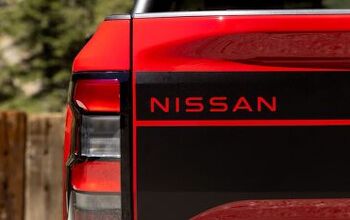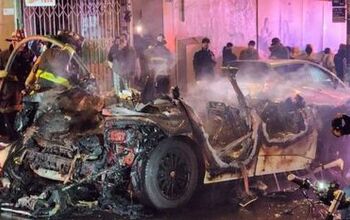For the Fans: FIA Explains Its New Rally Safety Guidelines

The FIA wants to safeguard the future of rallying by imposing new standards that target mischievous fans. While it hardly seems fair to burden fans with safety under normal circumstances, certain rally stages in the WRC have a habit of attracting risk-taking behavior, where fans intentionally get as close to the course as possible as vehicles fly by. Truth be told, amateur rallying isn’t much better.
Even as safety continues to improve, danger is a major component of motorsport and, conversely, one of the primary reasons rallying remains so popular. There is a level of heightened unpredictability that many, including this author, find intoxicating. But the FIA still doesn’t want to see fans getting creamed by drivers, so it’s understandable to see it making an effort to further improve safety protocols — one of which involves using on-board cameras to identify thrill seekers putting themselves in harm’s way.
“Safety is the key for the sustainability of rallying in the future and one of the keys in safety is education — we see this around the world. These guidelines will help educate all to have the best procedures and the best habits in rallying,” FIA rally director, Yves Matton, told Autosport in a recent interview.
“The target we have to fix is zero [deaths and injuries], but we know how difficult that is. It is this question of education and knowledge to let the people understand how dangerous it can be if you are not doing the right things and this takes time — education always takes time.”
The FIA head’s of circuit and rally safety, Stuart Robertson, explained that new safety measures will first be enforced via WRC as a way to “demonstrate best practice and educate people in these vital messages of how to organize events as safely as possible for spectators.” From there, the new safety solutions will trickle down to more localized series and events.
“We have initiated a project that will help us detect the locations of spectators through image recognition, anonymously, using onboard cameras and various other tools,” said Robertson. “We’re employing new, high-level technology to identify where these people are located. We know they’re waiting until the safety crews have passed through before moving into [dangerous] positions.”
By identifying problem areas, the FIA thinks organizers can be swiftly alerted and dispatched to “take action.” However, what that entails is sort of nebulous. Rally stages are huge and sending someone to tell people to move away from a specific corner could take quite a bit of time — even under ideal circumstances. But the FIA believes making the effort is an important part of ensuring the sport’s future wellbeing. It doesn’t take more than a couple high-profile tragedies before people will question whether or not rallying should even be legal and the potential for such liabilities in WRC are omnipresent.
“Even at the sport’s top, top level we still see spectators in the wrong place. These people either have a lack of knowledge, maybe it’s their first event or they’re the farmer who has walked out of his field to see what’s going on. Or they’re the fanatical fans supporting their favorite driver and want to get as close as possible. Or, worse still, they’re the YouTube heroes who want to lie at the side of road and film the stones flying over their own heads as the car passes within inches of them. All to increase the number of hits they get on their video,” Robertson cringed. “There’s an unbelievable range of people we have to reach out to right around the world, but that’s what the Rally Safety Guidelines will do.”
[Images: FIA]

A staunch consumer advocate tracking industry trends and regulation. Before joining TTAC, Matt spent a decade working for marketing and research firms based in NYC. Clients included several of the world’s largest automakers, global tire brands, and aftermarket part suppliers. Dissatisfied with the corporate world and resentful of having to wear suits everyday, he pivoted to writing about cars. Since then, that man has become an ardent supporter of the right-to-repair movement, been interviewed on the auto industry by national radio broadcasts, driven more rental cars than anyone ever should, participated in amateur rallying events, and received the requisite minimum training as sanctioned by the SCCA. Handy with a wrench, Matt grew up surrounded by Detroit auto workers and managed to get a pizza delivery job before he was legally eligible. He later found himself driving box trucks through Manhattan, guaranteeing future sympathy for actual truckers. He continues to conduct research pertaining to the automotive sector as an independent contractor and has since moved back to his native Michigan, closer to where the cars are born. A contrarian, Matt claims to prefer understeer — stating that front and all-wheel drive vehicles cater best to his driving style.
More by Matt Posky
Latest Car Reviews
Read moreLatest Product Reviews
Read moreRecent Comments
- Wjtinfwb No confusion on my end, Ghost. The Government has zero role in job creation outside of the legitimate opportunities' created by Government going about it's responsibilities, namely keeping the American people and territory safe from foreign intrusion. Of course, they're failing epically at that but that's a different topic. The American free enterprise system is what enables job creation. Government's role is to stay out of the way of that system, but they seem incapable of doing so. Oil & Gas exploration is just one example. If a National Job Policy is what you're looking for, there are other countries that will be happy to accept your application for residency.
- Michael Smith I drive 100-300 miles a day in new BMWs, Mercedes-Benzes, and GM SUVs. Some are already equipped with automatic braking.It's the first thing I turn off when I start the car.I've had experiences where (as the author notes) the system gave false alarms and stabbed the brake pedal, threatening my ability to control the car.Further, every driver encounters situations where, for example, legal following distance must be momentarily compromised in order to avoid a difficult situation. When the system intervenes, it disrupts the driver's plan of action. This can lead to a collision as the driver has to suddenly react not to his surroundings, but to the system.Not only is automatic braking an insult to skilled drivers, it's dangerous to everyone.
- Dave M. My hipster daughter is greatly into it. We watched the race together this weekend. It was interesting but I'm not devoted to it like she is. She'll be at the Austin race in October.
- Bd2 I'll watch F1 when Kia and/or Hyundai pony (pun intended) up the cash to field a class leading team. Hyundai is leading many series with the Elantra N with it's incredible 350HP Smartstream-R engine.
- Steve Biro There are 24 races on this year’s F1 schedule. And I guarantee you no more than two will be reasonably exciting, Meanwhile, F1’s reception for Andretti reveals the dark underbelly of the sport. I have followed F1 since the 1960s and, frankly, I am running out of interest. I’ll catch a race if it’s convenient but won’t bother DVRing them.




































Comments
Join the conversation
Rallying is the most criminally dangerous activity I've ever seen termed a sport but I admittedly missed out on Mesoamerican ball games.
While it doesn't seem like anything proposed here is unreasonable, it's only a matter of time before they completely neuter the sport. Every other motorsport Has been.